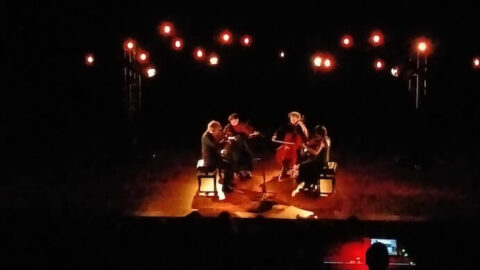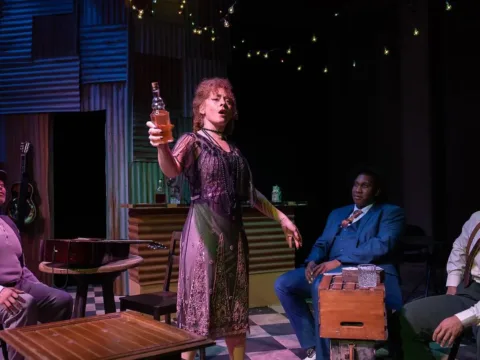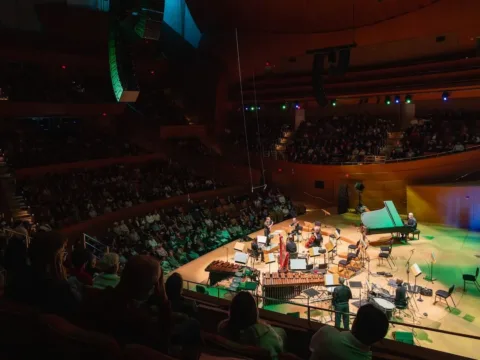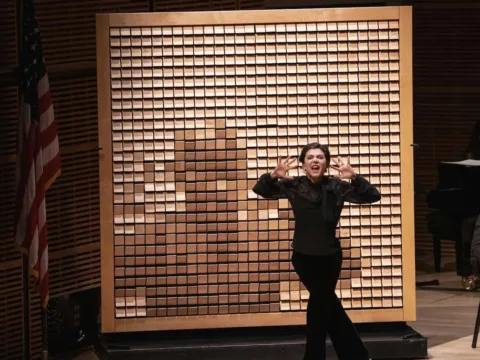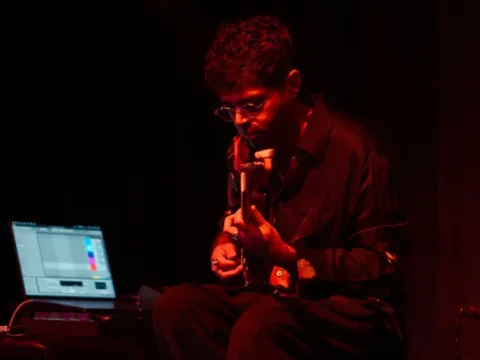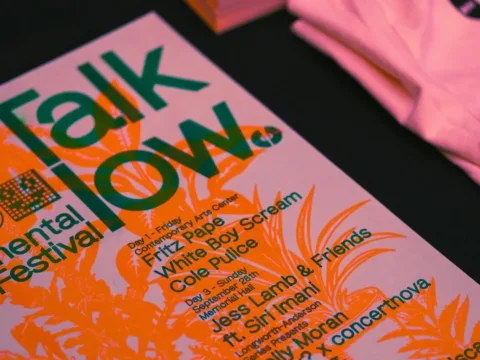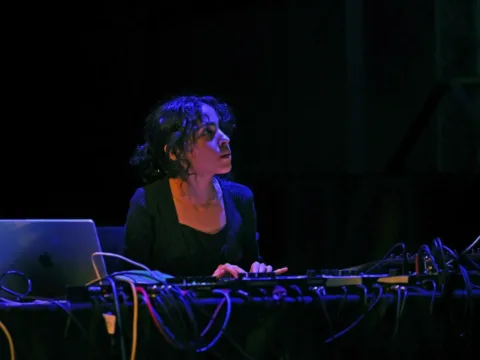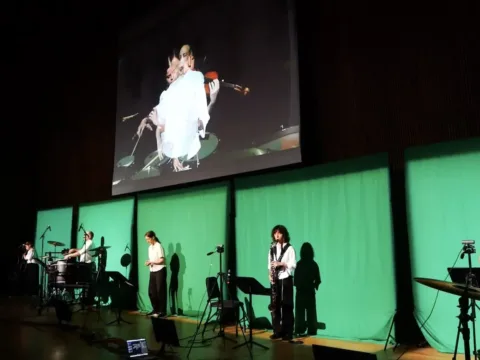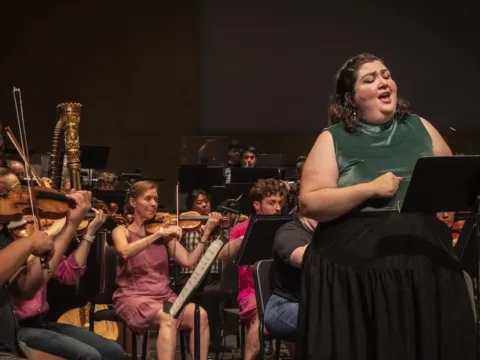The Southbank Centre has been a major performing arts venue in London since it opened in 1951, but its music programming has not completely recovered from the Covid-19 pandemic. Their once ambitious programming – such as their year-long series themed around Alex Ross’ book The Rest is Noise in 2013 – is sadly now a distant memory. Though considerably shorter, the recent four-day Sound within Sound festival, based on Kate Molleson’s fascinating 2022 ‘history of radical 20th-century composers’, was nevertheless a welcome opportunity to hear composers who have been historically marginalised.
Molleson’s book explores ten composers from a variety of cultural backgrounds, including Julián Carrillo, Filipino composer José Maceda, and the intriguing Ethiopian nun, composer and pianist Emahoy Tsegué-Mariam Guèbru. As a regular BBC broadcaster, Molleson promotes new and little-known music, and she introduced the festival on 4 July in conversation with the New Zealand-born composer Annea Lockwood.
The last day of the festival featured Lockwood’s ‘sound map’ of the Housatonic river (2010), installed in the Purcell Room. Lockwood said in her interview with Molleson that she wants audiences to feel immersed in the work so they pay more attention to rivers and nature. Her approach is not didactic or obviously activist: rather, she wants to go deeper, to feel nature through the body. The installation combined a canvas map of the river with sounds that she closely recorded along its course – not only water, but also birds, insects, rumbling transport sounds, and occasional humans.

‘Have a good float’, Lockwood said before the recording started. For much of the one hour and 17 minute duration, I oddly felt submerged in flowing water while being completely dry. Time passed in the form of sound, and what most struck me were the musical qualities of the recording – layering, change, rhythm, pitch. Lockwood’s sonic journey showed that everything can be music if we pay close enough attention.
The water theme continued in the final concert, focusing on the French composer Éliane Radigue. Since 2011, she has composed a series of instrumental works titled ‘Occam’; at the time of writing there are over 80 such pieces. The title is derived from Occam’s Razor, the principle that, all else being equal, the simplest explanations and choices are likely also to be the best. They are collaborative works; Molleson wrote in Sound within Sound, ‘Every new piece in the Occam series begins with Radigue and a performer sitting down in her apartment and talking about water.’ The ‘Occam Ocean’ works in the series are for ensemble – suggesting a larger body of water – ‘Occam River’ for a duo, and those simply titled ‘Occam’ for a soloist.
The audience were in darkness in the Queen Elizabeth Hall, and the performers were simply lit by orange filament bulbs. In the first half, two harps took centre stage. Radigue’s OCCAM I for amplified harp, played by French harpist and composer Hélène Breschand, was followed by OCCAM XIV performed by Rhodri Davies, and they collaborated in the duo OCCAM RIVER XX.

Anyone assuming that French music for the harp features flowing arpeggios had their preconceptions blown out of the water. Crouching by her instrument, Breschand rubbed a low string with the hairs of a violin bow, awakening its harmonics, slowly drawing the sound out, transforming it into a sustaining instrument. Breschand added to the texture, rubbing the soundboard with a mallet and introducing rapid, dry figuration in the upper reaches of the instrument, but the abiding impression of this work was the harp harmonics that were brought to the surface and unleashed. This idea continued in OCCAM XIV: while Davies was in a more conventional seating position, he played his harp with two violin bows. The sound took a while to fully blossom, but eventually the multilayered harmonics completely challenged our ideas of what the harp can do. The upper partials were even stronger in the piece for two harps, underpinned by a constant drone: the instrument was transfigured.
The Montreal-based Quatuor Bozzini brought two programmes to the festival, the second of which focused on Radigue’s OCCAM DELTA XV. While the piece is harmonically static, the Bozzinis drew rich and warm resonances out of their instruments by bowing freely, playing without vibrato and moving the bow towards and away from the bridge. Like waves breaking on the shore, their lines overlapped, always the same and yet always in motion. It was a mesmerising performance, and most unusually, the audience was silent for a long period before applause broke out.
Both Lockwood and Radigue’s music is immersive, enticing the audience to listen closely and discover the ‘sound within sound’ of Molleson’s book title. Molleson shows that when composers who have been systematically ignored are written about in an engaging manner, readers will want to discover more about their music. But however engaging a book, music only exists in sound and in performance: let’s thank the Southbank Centre for enabling us to hear the Sound within Sound composers, and let’s hope for similarly adventurous programming in the future.
I CARE IF YOU LISTEN is an editorially-independent program of the American Composers Forum, funded with generous donor and institutional support. Opinions expressed are solely those of the author and may not represent the views of ICIYL or ACF.
A gift to ACF helps support the work of ICIYL. For more on ACF, visit the “At ACF” section or composersforum.org.
